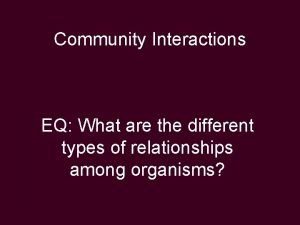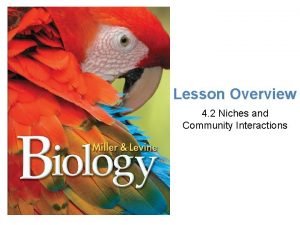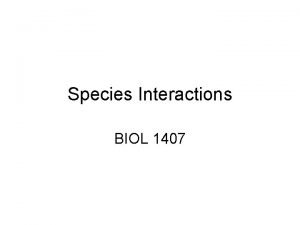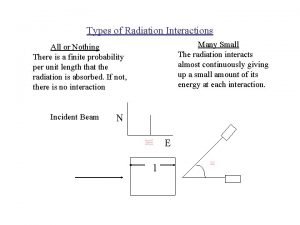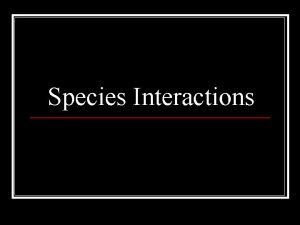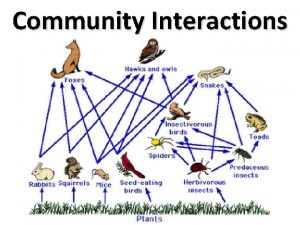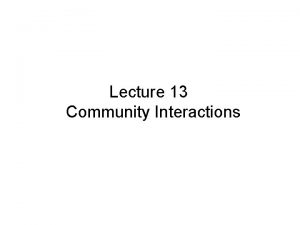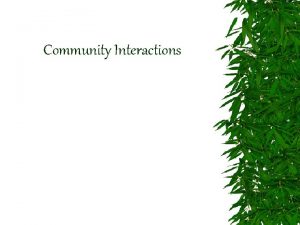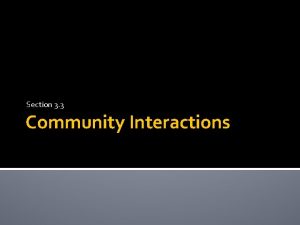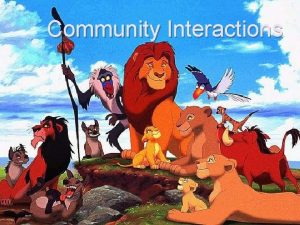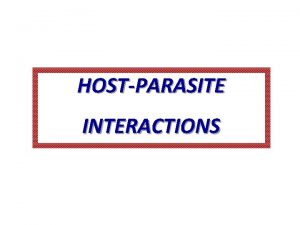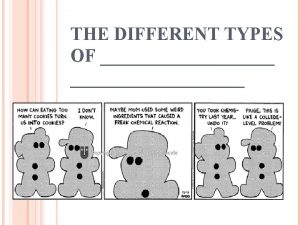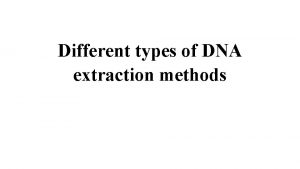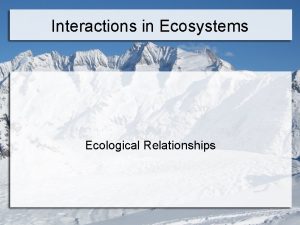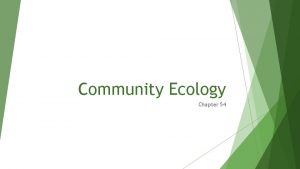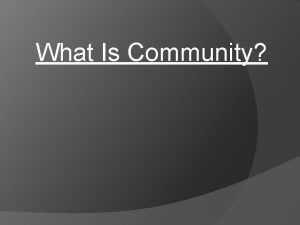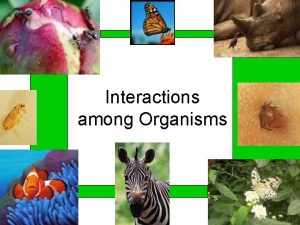Community Interactions EQ What are the different types

















- Slides: 17

Community Interactions EQ: What are the different types of relationships among organisms?

• Habitat – where an organism lives • Niche – an organism’s specific role in its environment Ex. Place in food web

Types of Community Interactions 1. Competition 2. Predation 3. Symbiosis 1. Mutualism 2. Commensalism 3. Parasitism

Competition • Occurs when members of the same or different species compete for the same resource (Food, water, shelter, space, mates)

Predation • An interaction when one organism captures & feeds on another (Predator/Prey)

Symbiosis • Any relationship where 2 sp. Live closely together • Types of Symbiosis: –Mutualism –Commensalism –Parasitism

Commensalisms Mutualism Parasitism

Mutualism • Both sp. Benefit • EX: Flowers & Insects • Gobi + shrimp

Commensalism • One sp. Benefits, and the other is unaffected • EX: barnacles on a whale

Parasitism • One organism lives on or inside another and harms it • EX: Fleas on pets, tape worm

Ecological Succession • Ecosystems are constantly changing in response to natural and human disturbances

• As an ecosystem changes, older inhabitants gradually die out and new organisms move in, causing further changes in the ecosystem

Primary Succession • Occurs on surfaces where no soil exists such as after volcanic eruptions, or on bare rock when glaciers melt. • The first species to populate the area are called pioneer species such as lichen


Secondary Succession • Occurs after a disturbance changes the existing community without destroying the soil.

Occurs when land cleared and plowed for farming is abandoned

Occurs when there are wildfires that burn woodlands
 3 types of community interactions
3 types of community interactions Mikael ferm
Mikael ferm 6.1 habitats niches and species interactions
6.1 habitats niches and species interactions Niches and community interactions
Niches and community interactions Types of community pharmacies
Types of community pharmacies Types of parasitism
Types of parasitism Example of commensalism
Example of commensalism Types of interactions
Types of interactions Cape buffalo and cattle egrets relationship
Cape buffalo and cattle egrets relationship Thermosoftening plastics examples
Thermosoftening plastics examples Flame test principle
Flame test principle Sound will travel at different speeds in different mediums.
Sound will travel at different speeds in different mediums. Library.thinkquest.org 19537
Library.thinkquest.org 19537 Different culture have different moral codes
Different culture have different moral codes Different angle different story
Different angle different story Acids and bases have two different faces
Acids and bases have two different faces Manufactured boards examples
Manufactured boards examples Different people different things
Different people different things
